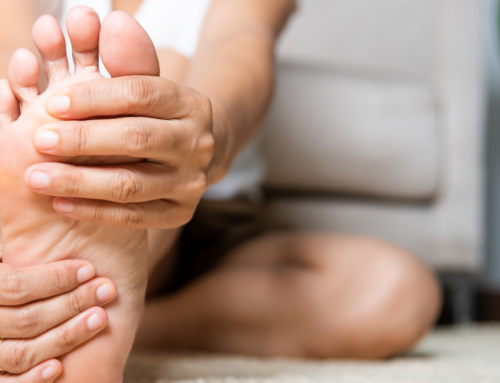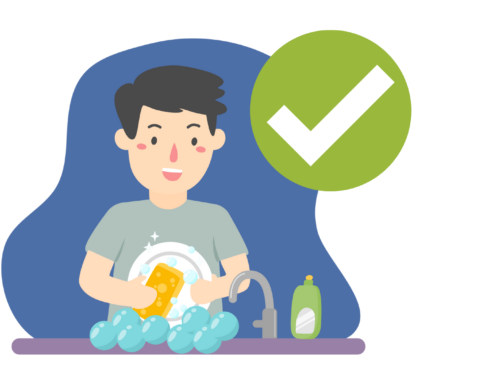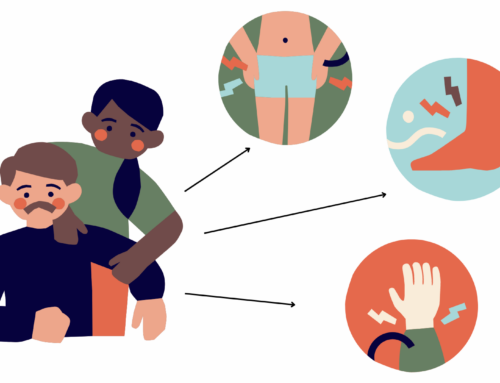Tips to perform a correct squat
The squat is an exercise that works the lower body. It can be performed by simply using your own body weight, without adding any additional resistance, or by using specific equipment such as weights or barbells.
This exercise focuses mainly on the thighs (quads and hamstrings) and glutes. But it also works core strength and stability, ankle mobility and back muscles, among others.
The gap shown between the ruler and the back indicates that the technique of this squat is performed with excessive bend in the lower back. This causes overuse of the back muscles which can cause contractures or spasm. This arching does not activate the gluteal and abdominal muscles properly, which leads to overloading of other areas of the legs and back.
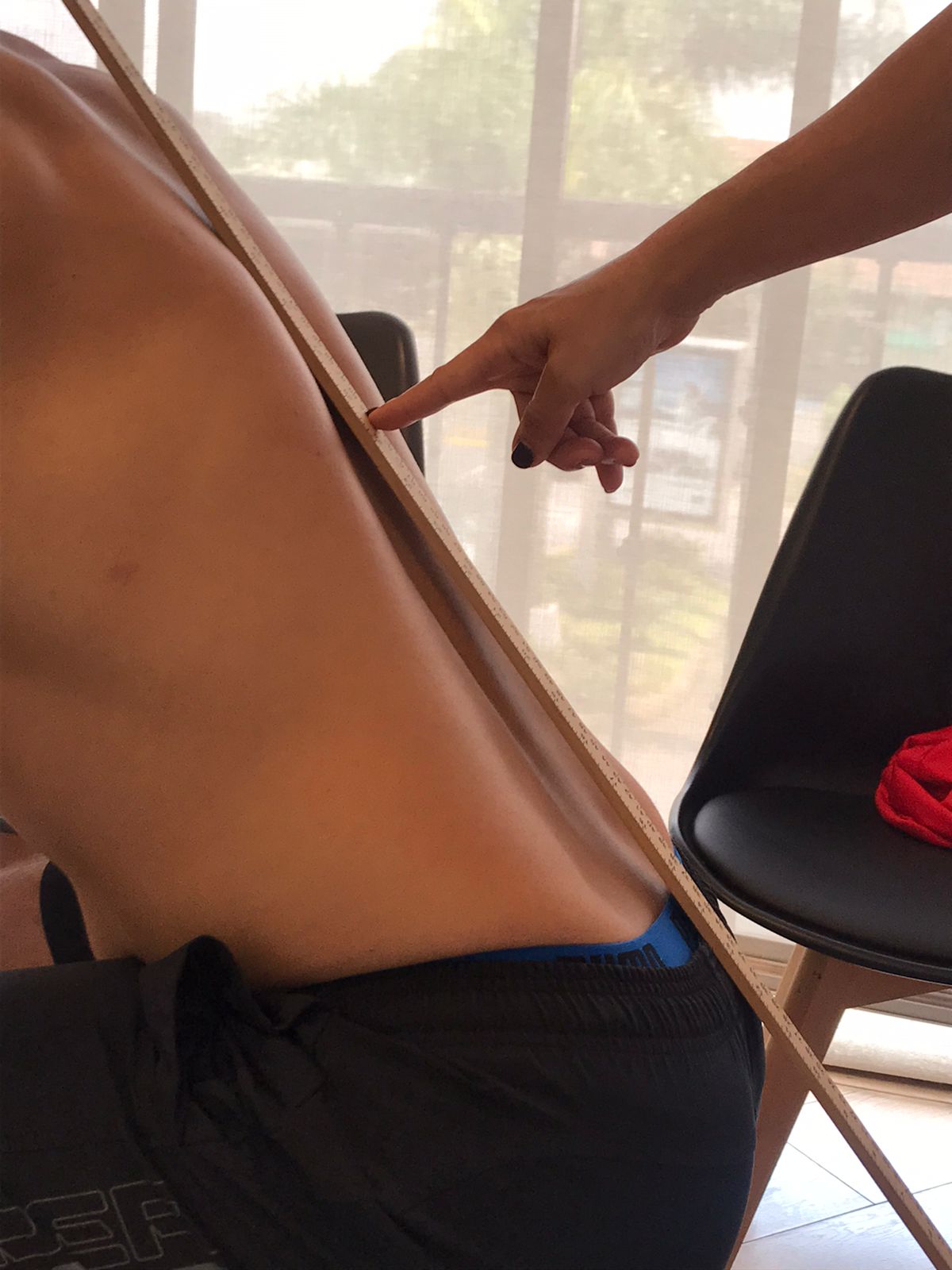
Squats well done…
Squats poorly done…
Tips for a correct squat
Distributing the weight
When performing squats, the weight is thrown entirely toward the tip of the toes – to the area known as the metatarsus. During this movement, the back can lose stability and move forward. To avoid this, try to bring the weight toward the heels to help the back maintain its straight position.
Maintaining posture
- The back should be straight and in line with the rest of the body; it should never curve.
- Your gaze should remain straight ahead. In this way, the head is also forced to face forward.
- The shoulders remain in a more backward position, as this facilitates good breathing and avoids injuries caused by the curvature of the back.
- It is a myth that the knees should not go beyond the tip of the toes. They can slightly pass this imaginary line to avoid excessive load transfer to the hips and lower back.
Start in order
Although squats can be of various types, the position to start performing them is usually the same. You should stand with your back straight, your abs contracted and your legs shoulder-width apart. Once you have mastered this position, you can perform a variety of squats, such as sumo or skier type. The difficulty for many beginners when performing these styles is that the distance between the legs is altered.
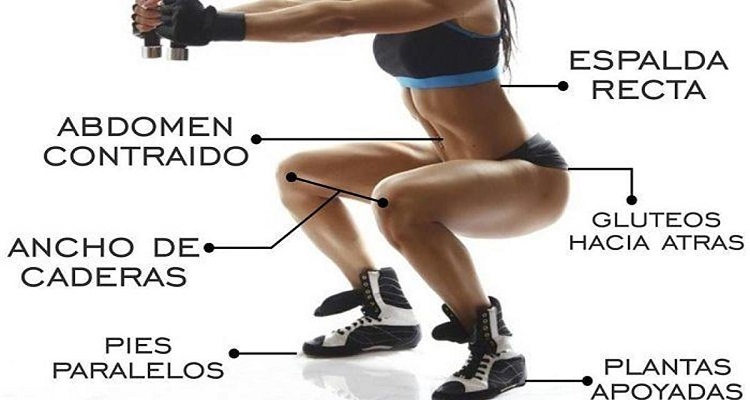
Descend as far as possible
The more you descend, the more you work the muscles involved. However, maintaining a straight back posture should be paramount. Posture should not be sacrificed in an attempt to descend further.
Each person will perform differently depending on its muscular strength, endurance and flexibility, among other abilities. It is important to adapt the exercise to each individual and to monitor the progress achieved. If you have ever overloaded some of your functions and suffered an injury, it is best to see a specialist.
The squat is an exercise that works the lower body. It can be performed by simply using your own body weight, without adding any additional resistance, or by using specific equipment such as weights or barbells.
This exercise focuses mainly on the thighs (quads and hamstrings) and glutes. But it also works core strength and stability, ankle mobility and back muscles, among others.
The gap shown between the ruler and the back indicates that the technique of this squat is performed with excessive bend in the lower back. This causes overuse of the back muscles which can cause contractures or spasm. This arching does not activate the gluteal and abdominal muscles properly, which leads to overloading of other areas of the legs and back.

Squats well done…
Squats poorly done…
Tips for a correct squat
Distributing the weight
When performing squats, the weight is thrown entirely toward the tip of the toes – to the area known as the metatarsus. During this movement, the back can lose stability and move forward. To avoid this, try to bring the weight toward the heels to help the back maintain its straight position.
Maintaining posture
- The back should be straight and in line with the rest of the body; it should never curve.
- Your gaze should remain straight ahead. In this way, the head is also forced to face forward.
- The shoulders remain in a more backward position, as this facilitates good breathing and avoids injuries caused by the curvature of the back.
- It is a myth that the knees should not go beyond the tip of the toes. They can slightly pass this imaginary line to avoid excessive load transfer to the hips and lower back.
Start in order
Although squats can be of various types, the position to start performing them is usually the same. You should stand with your back straight, your abs contracted and your legs shoulder-width apart. Once you have mastered this position, you can perform a variety of squats, such as sumo or skier type. The difficulty for many beginners when performing these styles is that the distance between the legs is altered.

Descend as far as possible
The more you descend, the more you work the muscles involved. However, maintaining a straight back posture should be paramount. Posture should not be sacrificed in an attempt to descend further.
Each person will perform differently depending on its muscular strength, endurance and flexibility, among other abilities. It is important to adapt the exercise to each individual and to monitor the progress achieved. If you have ever overloaded some of your functions and suffered an injury, it is best to see a specialist.



